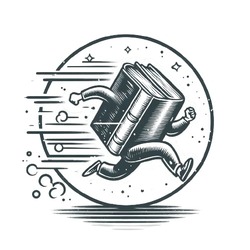One sentence summary:
Holy Blood, Holy Grail explores the possibility of a secret bloodline of Jesus Christ and examines the evidence for this controversial theory.
Book genre:
Non-fiction, historical mystery, religious conspiracy
Main topic of the book:
The origins and potential existence of a secret bloodline of Jesus Christ and the possible implications for the history of Christianity.
Key ideas:
- Jesus may have been married to Mary Magdalene and had children, which would contradict the traditional belief of his celibacy.
- The Knights Templar were believed to have been protectors of this bloodline and the Holy Grail, a vessel containing Jesus’ blood.
- The Catholic Church has been hiding this truth for centuries and has gone to great lengths to suppress any evidence or information related to it.
Main parts of the book and a short summary:
- Part One: The Discovery – The authors present their findings and theories after years of research and investigation into the mystery of the Holy Grail and the possible existence of a secret bloodline of Jesus.
- Part Two: The Investigation – This section delves into the history of the Knights Templar and their alleged involvement in protecting the Holy Grail and the bloodline of Jesus. It also explores the role of certain secret societies in the dissemination and preservation of this knowledge.
- Part Three: The Evidence – The authors present a variety of evidence, including coded messages, genealogical research, and historical records, that support the theory of a secret bloodline and the existence of the Holy Grail.
- Part Four: The Conclusion – In the final section, the authors offer their conclusions and speculate on the potential implications of this controversial theory for the history of Christianity and the Catholic Church.
Key takeaways:
- The potential existence of a secret bloodline of Jesus Christ and the Holy Grail has sparked intrigue and controversy for centuries.
- The authors’ thorough research and evidence suggest that there may be some truth to this theory, but it remains a subject of debate and speculation.
- If true, this information has the potential to challenge and change long-held beliefs and traditions within the Christian religion.
Author’s background and qualifications:
Michael Baigent is a writer and researcher who has co-authored other books on religious and historical mysteries. He studied comparative religion and has a strong interest in esoteric traditions and secret societies. He also has a background in editorial work and journalism. Co-authors Richard Leigh and Henry Lincoln have similar backgrounds in writing and research.
Target audience:
This book would appeal to those interested in historical mysteries, religious conspiracies, and alternative theories about the origins of Christianity. It may also appeal to those with an interest in secret societies and the potential influence of these organizations on historical events.
Publisher and first publication date:
The book was first published in January 1982 by Delacorte Press and re-released in 1983 by Corgi Books. It is currently in its 20th printing and has been published in multiple languages.

